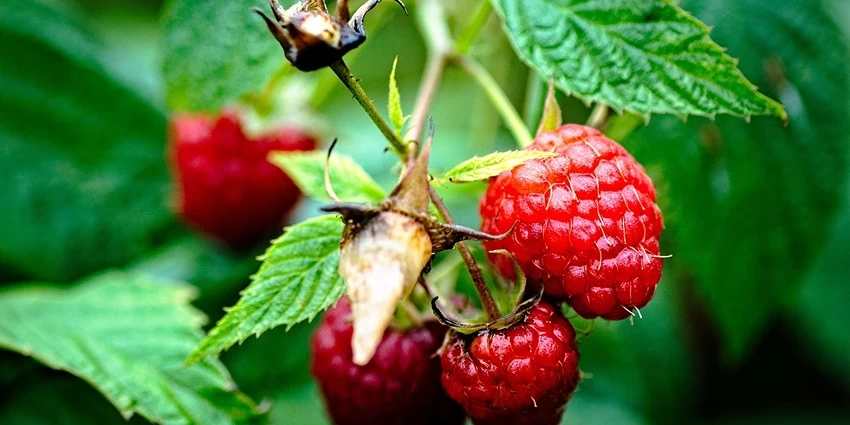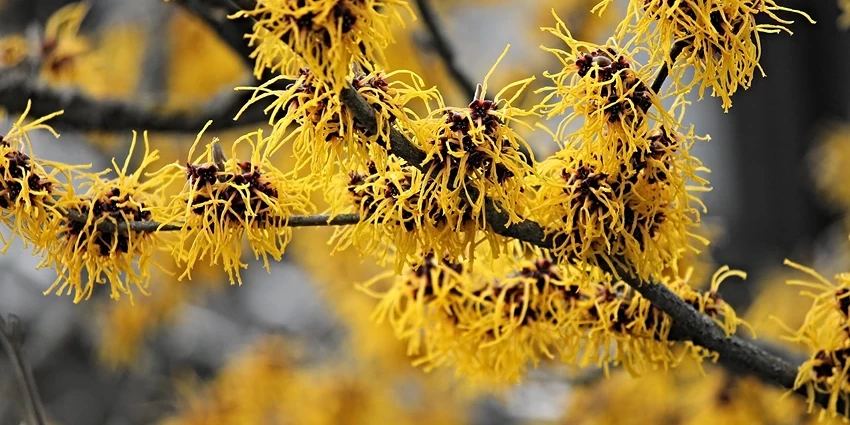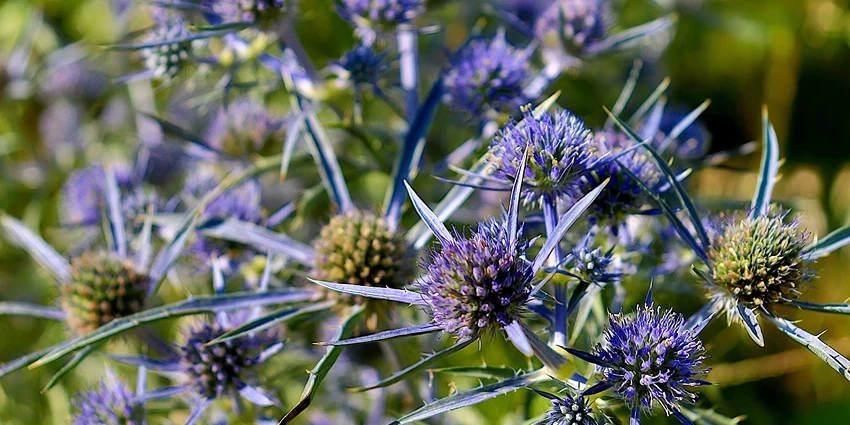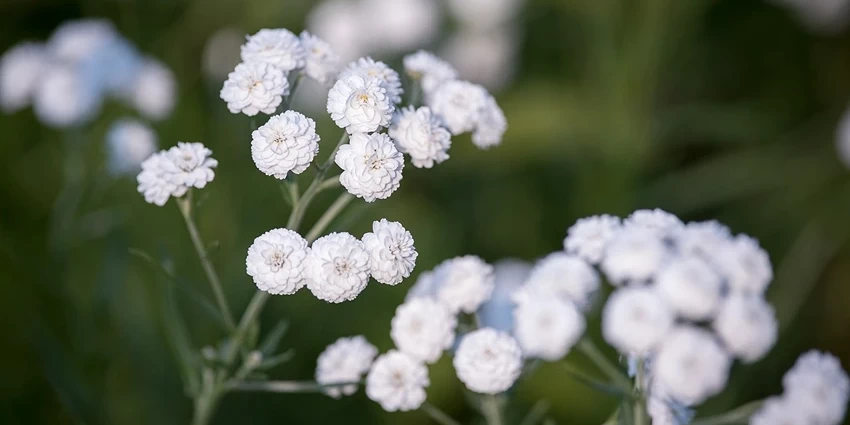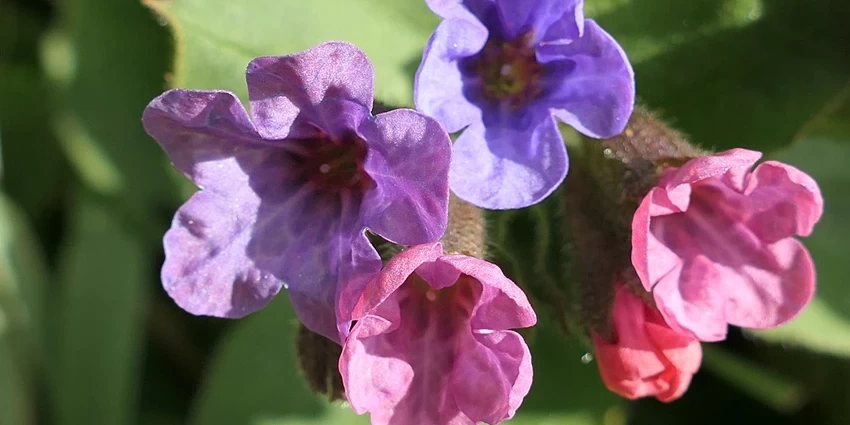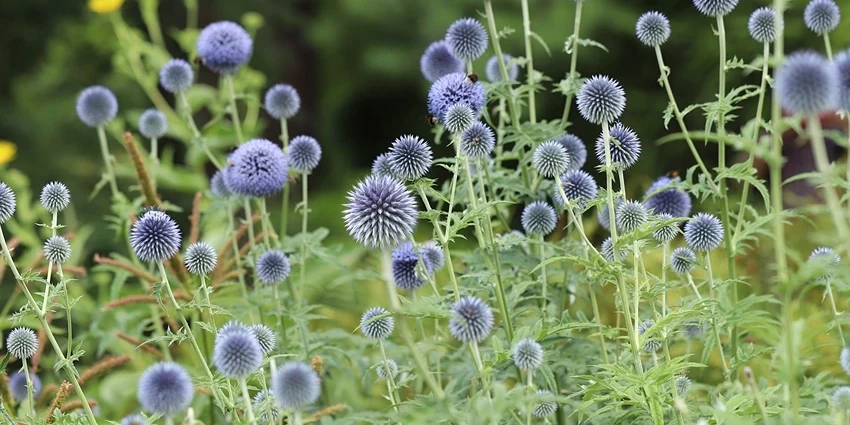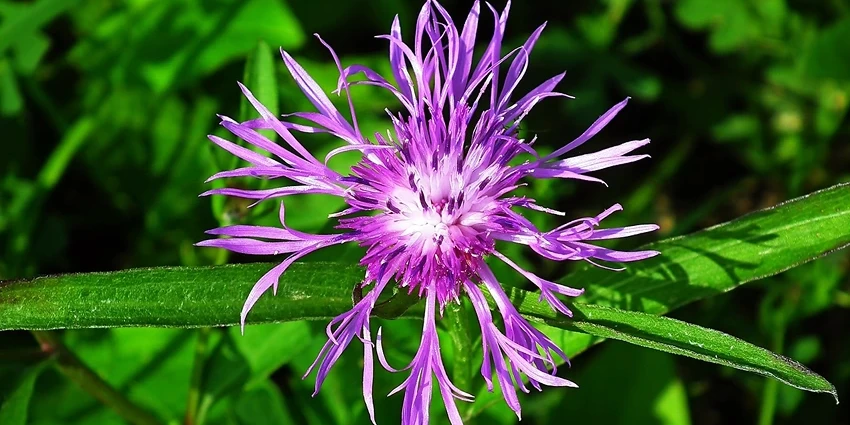All products were chosen independently by our editorial team. This review contains affiliate links and we may receive a commission for purchases made. Please read our affiliates FAQ page to find out more.
Home » Types of Plants » The Enchanting World of Rubus idaeus: A Deep Dive into the Raspberry Realm
Latin Name
Rubus idaeus
Most Commonly Used Where
Gardens, farms
Family
Rosaceae
Raspberries, known scientifically as Rubus idaeus, are more than just a summer treat. They are a botanical wonder, deeply rooted in the Rosaceae family, and have been a part of human culture for centuries. This article unfolds the layers of this remarkable plant, exploring its taxonomy, physical characteristics, and the secrets behind its cultivation.
| Jan | Feb | Mar | Apr | May | Jun | Jul | Aug | Sep | Oct | Nov | Dec | |
|---|---|---|---|---|---|---|---|---|---|---|---|---|
| Plant | ✓ | ✓ | ✓ | ✓ | ✓ | ✓ | ✓ | ✓ | ✓ | ✓ | ||
| Harvest | ✓ | ✓ | ✓ | ✓ |
Register for our latest in-depth reviews and product round-ups from the experts.
Enter your email address below to receive our monthly review emails.
By entering your details, you are agreeing to our terms and conditions and privacy policy. You can unsubscribe at any time.
Key Takeaways
- Rubus idaeus is a perennial plant with biennial stems, known for its delicious red fruits.
- It belongs to the Rosaceae family and is native to Europe and Northern Asia.
- Raspberries thrive in forests and mountainous regions, requiring specific cultivation practices for optimal growth.
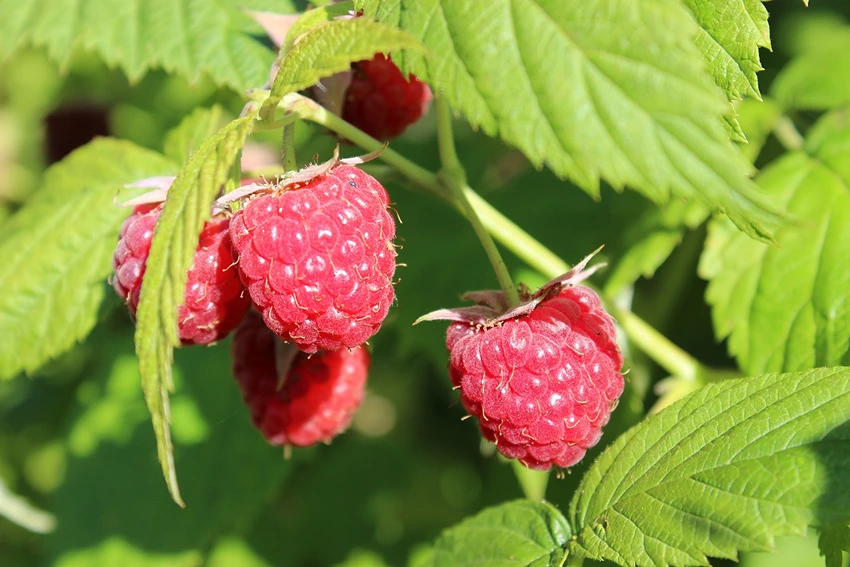
Overview of Rubus idaeus
Rubus idaeus, commonly known as the raspberry, is a plant that has captured the hearts of many with its sweet, tart berries. But there’s more to this plant than meets the eye. It’s a member of the Rosaceae family, native to Europe and Northern Asia, and has been cultivated in various temperate regions around the world.
Physical Description of Raspberry Plants
The raspberry plant is a fascinating specimen. It grows as a perennial, with biennial stems called “canes” emerging from a perennial root system. In its first year, a cane, known as a “primocane,” shoots up, reaching heights of 1.5–2.5 meters. It’s adorned with large, pinnately compound leaves, typically with five or seven leaflets, but no flowers. The second year transforms the primocane into a “floricane,” which doesn’t grow taller but produces side shoots with smaller leaves and, most importantly, flowers. These flowers, about 1 cm in diameter with five white petals, give way to the plant’s prized possession: the red, edible fruit.
Habitat and Biotope
Raspberries have a preference for forested areas, often forming open stands under tree canopies or denser clusters in clearings. In southern Europe and central Asia, they are found at higher altitudes, a testament to their adaptability and resilience. The species name ‘idaeus’ is a nod to Mount Ida in Turkey, a place of historical significance for this plant.
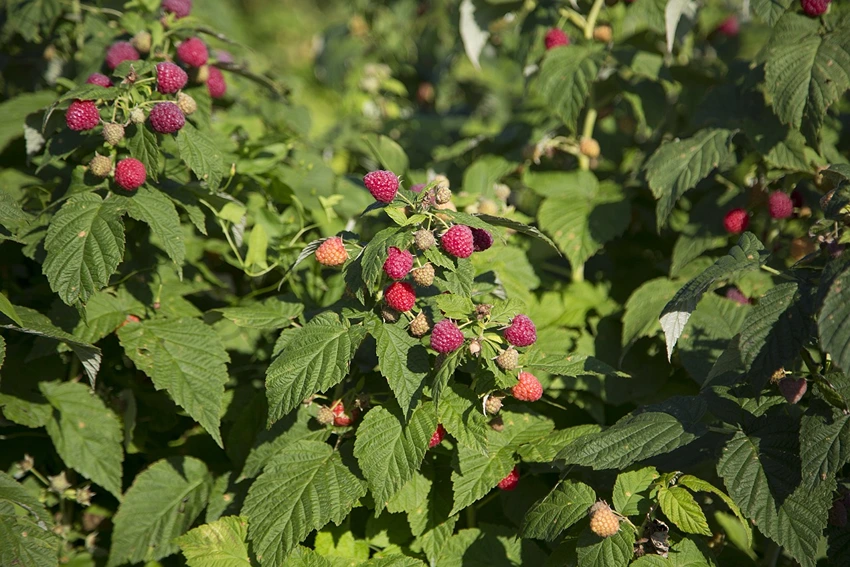
Taxonomy and Varieties
The world of raspberries is rich with variety. Rubus idaeus is closely related to Rubus strigosus (American red raspberry), and many cultivated raspberries are hybrids of these two species. This diversity is not just limited to different species but extends to various cultivars, each with unique characteristics and flavors.
Cultivation Practices
Growing raspberries is both an art and a science. They require specific conditions to thrive:
Soil and Climate Requirements
- Soil: Rich, well-drained soil is ideal.
- Climate: Temperate regions with specific temperature ranges.
Planting, Watering, and Sunlight Needs
- Planting: Proper spacing and depth are crucial.
- Watering: Consistent moisture without waterlogging.
- Sunlight: Full sun to partial shade for optimal growth.
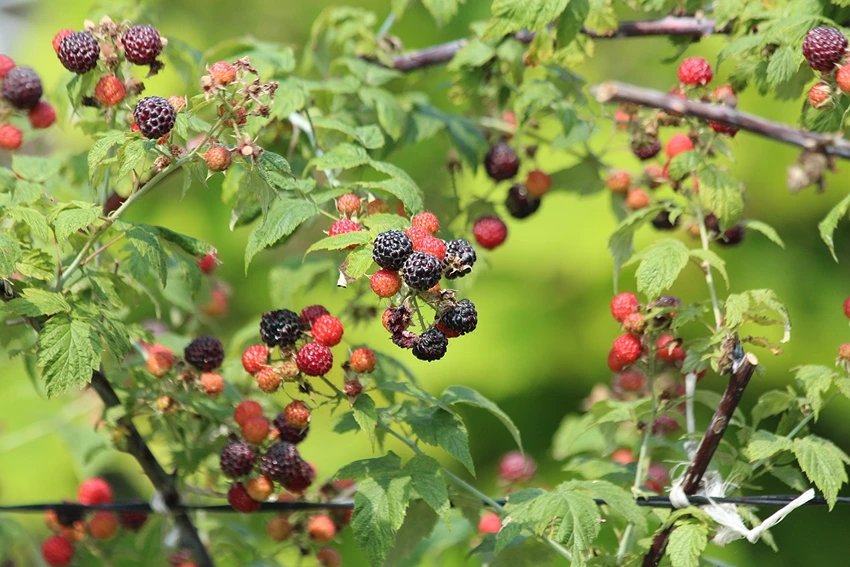
Propagation and Pruning
Propagation of raspberries can be done through various methods, including division and stem cutting. Pruning is an essential aspect of raspberry cultivation, with techniques varying based on the variety.
Pruning Techniques for Different Varieties
- Summer-fruiting varieties: Require pruning after fruiting.
- Ever-bearing varieties: Need a different approach to maximize yield.
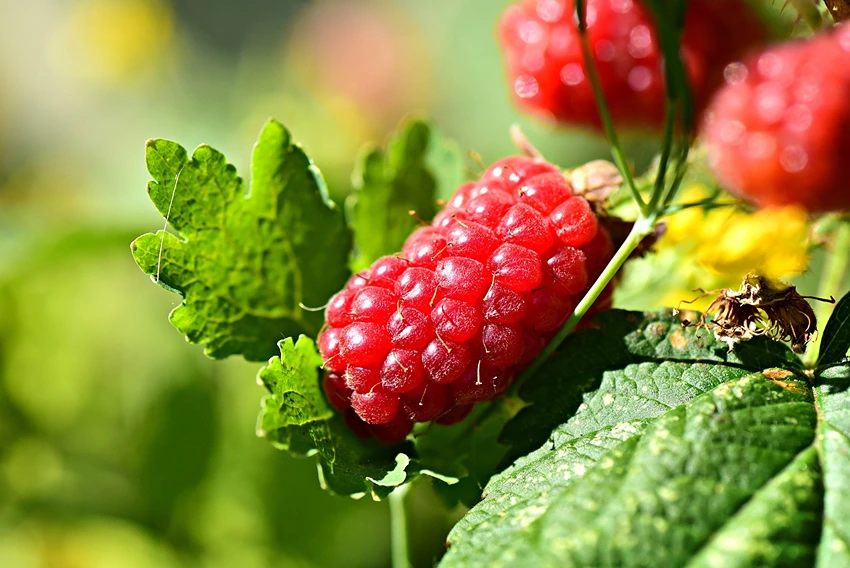
Pests and Diseases
Like any plant, raspberries are susceptible to certain pests and diseases. Common issues include fungal infections and insect infestations. Effective management involves preventive measures and timely treatment.
Prevention and Treatment Methods
- Fungal Infections: Use of fungicides and proper air circulation.
- Insect Infestations: Natural predators and insecticidal soaps.
Harvesting and Uses
The harvesting of raspberries is a delicate process, ensuring the fruits are picked at the right stage for maximum flavor. Raspberries are not just a culinary delight but also have medicinal uses, thanks to their nutritional and chemical properties.
Culinary and Medicinal Uses
- Culinary: Jams, desserts, and fresh consumption.
- Medicinal: Antioxidant properties and potential health benefits.
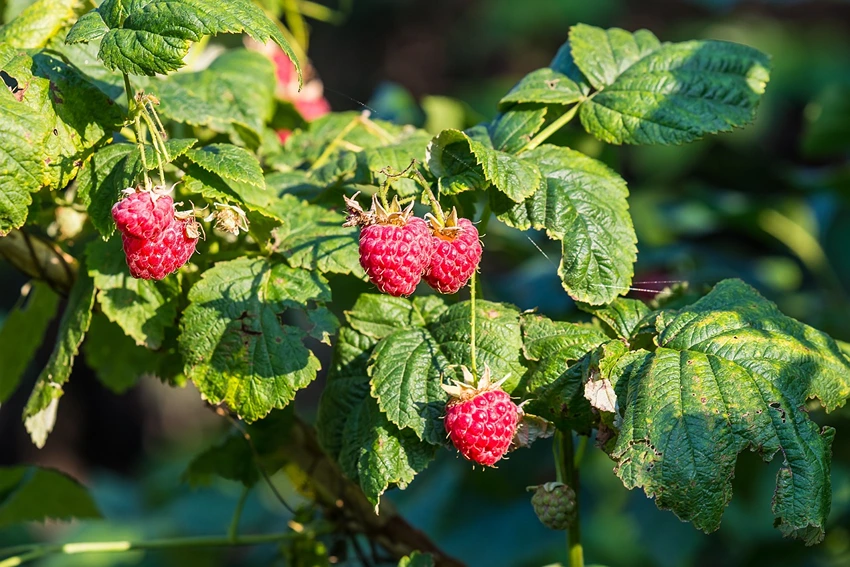
Nutritional and Chemical Properties
Raspberries are a powerhouse of nutrition and contain various chemical compounds that contribute to their health benefits.
Nutritional Content
- Vitamins: High in Vitamin C and folate.
- Minerals: Rich in essential minerals.
Chemical Compounds and Their Benefits
- Anthocyanins: Contribute to antioxidant properties.
- Ellagitannins: Potential health benefits.
Conservation and Environmental Impact
As a species listed as Least Concern by the IUCN, raspberries are not currently at risk. However, sustainable cultivation practices are essential to ensure their continued availability and minimal environmental impact.
Sustainability in Cultivation
- Organic Farming Practices: Reduce environmental impact.
- Conservation Efforts: Ensure the species’ longevity.
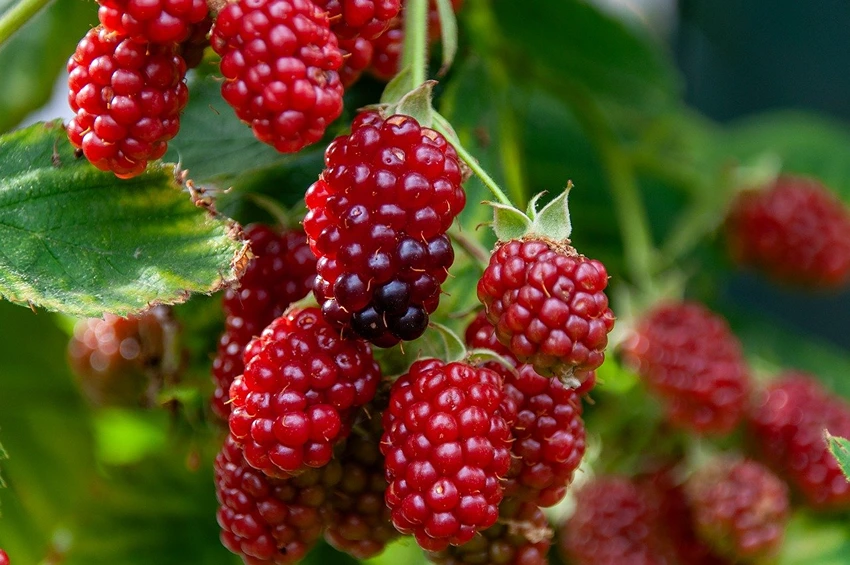
Conservation and Environmental Impact (Continued)
Raspberries, while not endangered, require responsible cultivation to maintain their populations and minimize environmental impact. Sustainable practices in raspberry farming are not just beneficial for the plant but also for the ecosystem.
Sustainability in Cultivation (Continued)
- Water Conservation Efficient lawn irrigation systems.
- Pest Management: Integrated pest management techniques.
Environmental Impact
- Biodiversity: Supports a range of pollinators.
- Soil Health: Organic cultivation improves soil quality.
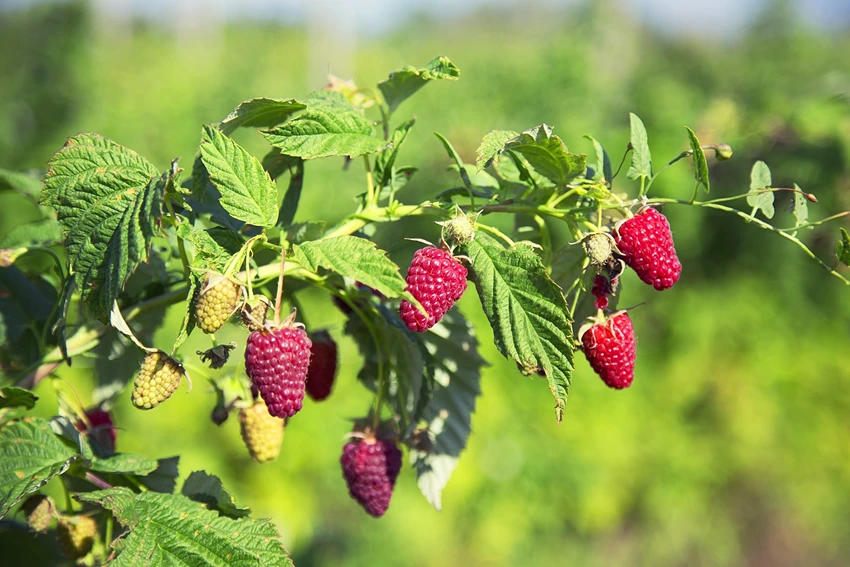
Frequently Asked Questions
Raspberry cultivation, while rewarding, can raise several questions. Here are some of the most common queries answered:
- Identification: Look for compound serrated leaflets and white blooms.
- Growing Tips: Rich soil, regular watering, and natural sunlight.
- Summer-Fruiting Varieties: Produce fruit in early summer.
- Ever-Bearing Varieties: Yield fruit throughout the growing season.
- Basic Care: Adequate sunlight, water, and nutrient-rich soil.
- Pruning: Essential for fruit production and plant health.
- Pests and Diseases: Aphids, fungal diseases, and root rot.
- Soil Requirements: Prefers well-drained, fertile soil.
Tables of Useful Information
Table 1: Nutritional Content of Raspberries
| Nutrient | Amount per 100g |
| Calories | 52 kcal |
| Protein | 1.2 g |
| Fat | 0.7 g |
| Carbohydrates | 11.9 g |
| Fiber | 6.5 g |
| Vitamin C | 26.2 mg |
| Folate | 21 µg |
Table 2: Common Raspberry Pests and Diseases
| Pest/Disease | Description | Management |
| Aphids | Small, sap-sucking insects | Use natural predators or insecticidal soaps |
| Botrytis | Fungal disease causing fruit rot | Improve air circulation, apply fungicides |
| Root Rot | Caused by overwatering or poor drainage | Ensure well-drained soil, reduce watering |
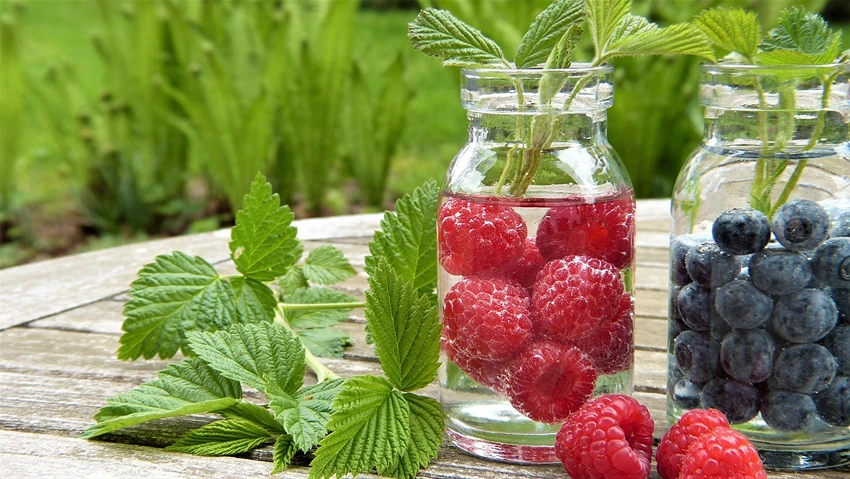
Conclusion
Rubus idaeus is more than just a source of delicious berries. It’s a plant with a rich history, diverse varieties, and numerous benefits. Understanding its cultivation, nutritional value, and environmental impact allows us to appreciate this remarkable plant fully. Whether you’re a seasoned gardener or a curious nature enthusiast, the world of raspberries offers a delightful and enriching experience.
Where to buy raspberry
Oliver, a creative powerhouse and gardening enthusiast, brings a unique blend of scientific knowledge and artistic flair to BritishGreenThumb.co.uk. Growing up in the vibrant city of Brighton, Oliver's earliest memories involve exploring the city's picturesque parks and gardens, which sparked his lifelong passion for horticulture.


